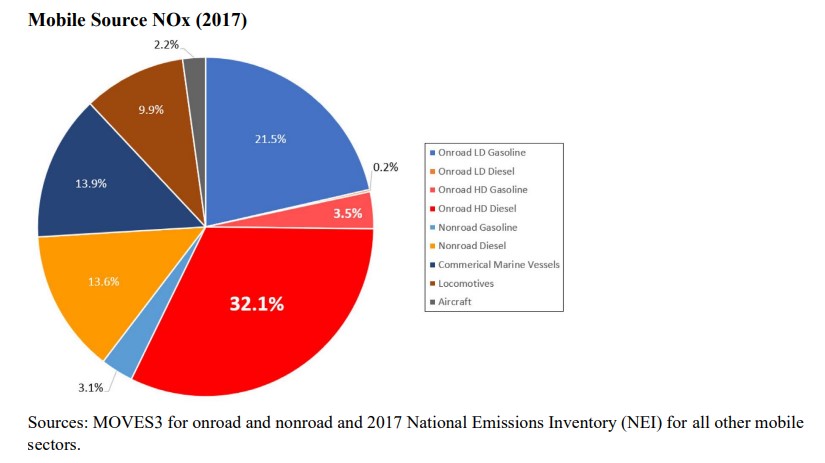
The Environmental Protection Agency (EPA) is enhancing clean air standards in regards to multi-pollutant emissions from medium- and heavy-duty vehicles.
The New Emissions Standard
In December 2022, the Clean Trucks Plan announced its aim to reduce greenhouse gas (GHG), smog- and soot-forming emissions. Nitrogen Oxides (NOx) are referred to as these types of emissions. The timeline of this plan is to be in effect as soon as model-year 2027.
According to the EPA’s Regulatory Update, “Taken together, these new multi-pollutant standards will improve public health in our communities and set the U.S. on a course to achieve ambitious levels of GHG emissions reductions from commercial highway transportation over the long term.”
The EPA acknowledges that heavy-duty engines and vehicle emissions contribute to poor air pollution. According to the 2017 National Emissions Inventory MOVES3 model, heavy-duty vehicles contributes to about 32% of NOx emissions into the atmosphere.
Heavy-duty vehicles can include vocational vehicles. Specialized for work purposes, these types of vehicles find some common use in construction, transportation, and maintenance industries. For example, these vehicles would be fire trucks, coach buses, and cement trucks.
Clean Trucks Plan
The first step in the three-part Clean Trucks Plan is “The Final Rule.” This step anticipates a “significant reduction in not only NOx but secondary pollutants such as fine particle matter (PM2.5) and ozone.”
It is important to note that the EPA scaled back the original proposal of the final rule. Their aim was to achieve a more manageable large-scale transition.
The agency continues to make additional rulemakings to reduce GHG emissions and other harmful air pollutants. “Two additional rulemakings, the Phase 3 greenhouse gas proposal and the proposal for multi-pollutant emissions standards for light-duty and medium-duty vehicles, are expected to be completed by the end of 2023.”
Moving Forward
Anticipating the looming regulations, fleet owners should plan accordingly. Pre-2027 truck models will undoubtedly be in high demand but quantities will remain limited. Truck owners will have few options: they can either proactively accelerate the purchase of new trucks or maintain their existing ones. Model years ’27 and ’28 could present maintenance challenges similar to the 2007 diesel emissions standards implications.
One major obstacle owners should anticipate are service challenges. This is partly because service technicians and mechanics need time to adapt to the new technology.
Though the shift to lower NOx emissions appears complex, the agency as well as legislative officials express confidence in the surging technologies.
Check back for updates as more information becomes available.
For additional information on the Environmental Protection Agency‘s Clean Trucks Plan, read here.
Learn more about our locations, here: Coopersburg Kenworth, Liberty Kenworth of Swedesboro, TRP Pottstown, and Liberty Kenworth of Bristol.

